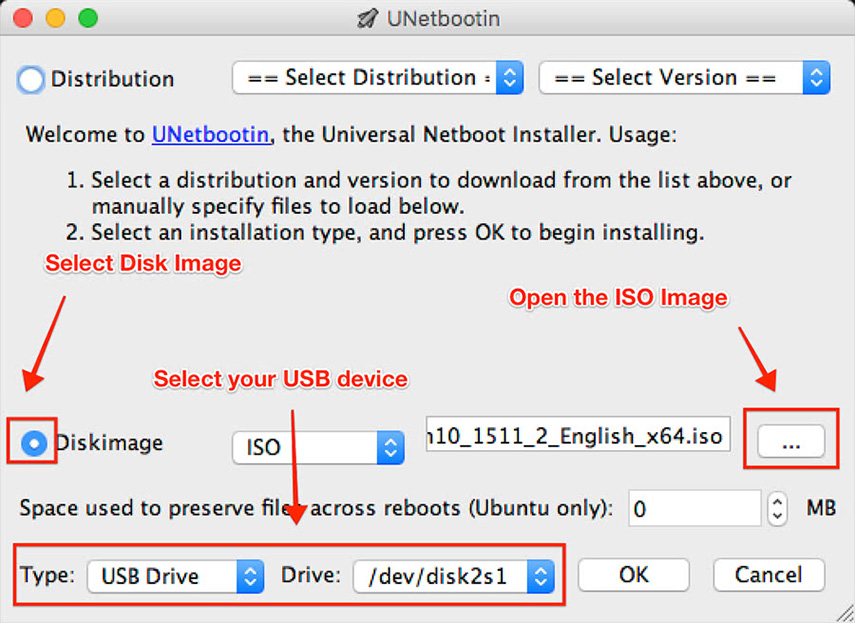

I'm not trying to start (or continue) a flame war, I'm just saying that it didn't work for me and what actually did. pretty common these days like I've done with RufusP and even occasionally uNetBootIn from Windows.Īnyways, Etcher worked just fine instead.

I didn't do any special commands and I wasn't trying to clone anything, just transfer an. It left the flash drive with an incomplete format, non-filesystem partition which wouldn't boot of course.
#Unetbootin mac iso
ISO to a flash drive (without any special partitions, just a typical FAT32 formatted flash drive) and gnome-disks looked like it worked, but upon closer inspection in gParted and when trying to boot from it, it had failed. For me, I tried to restore a downloaded Lubuntu. Disks uses the term 'restore' for this action (cloning from an image to a drive).Īll cloning tools work, when you clone from an Ubuntu iso file to the whole drive /dev/sdx There will be plenty of space for this in a USB 3 pendrive of 32 GB or more.Ī rather convenient way to get an installed system that boots in both UEFI and BIOS mode (but not in old 32-bit computers) is to clone/extract the system from a compressed image file according to the following link, /community/Installation/UEFI-and-BIOS ().ĭisks alias gnome-disks works, when you clone from an Ubuntu iso file to the whole drive /dev/sdx but not when you clone to a partition, for example /dev/sdx1. Or you let the installer write the bootloader to the head of the drive if BIOS mode, copy the live system's menuentries to the installed system's /etc/grub.d/40_custom file, run sudo update-grub and get it into the installed system's grub menu.
#Unetbootin mac install
If you install the bootloader to the partition, you will still boot via the live system, and you can copy the menyentries from the installed system to the live system's /boot/grub/grub.cfg and get it into the live system's grub menu. I mean install it into the latter part of the USB drive like it were installed into an internal drive. ( _live_system)Īnd 'behind' it install an Ubuntu or Ubuntu community flavour (for example light-weight Lubuntu, which works well from a USB drive). Or a persistent live system according with mkusb - Compressed image file. It is possible to create a live-only (or simple persistent live) system according to this link, 'Do it yourself' ()


 0 kommentar(er)
0 kommentar(er)
